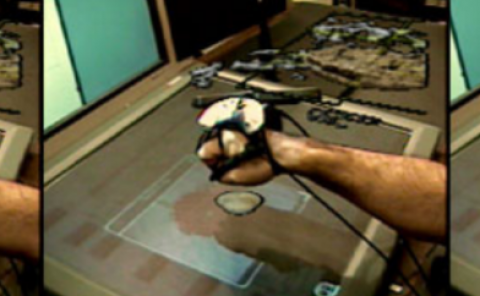Toward Improved Surgical Training: Delivering Smoothness Feedback using Haptic Cues
Title: Toward Improved Surgical Training: Delivering Smoothness Feedback using Haptic Cues
Teams: Facebook
Writers: William H. Jantscher, Shivam Pandey, Priyanshu Agarwal, Sadie H. Richardson, Bowie R. Lin, Michael D. Byrne, Marcia K. O’Malley
Publication date: March 25, 2018
Abstract
Surgery is a challenging domain for motor skill acquisition, and compounding this difficulty is the often delayed and qualitative nature of feedback that is provided to trainees. In this paper, we explore the effectiveness of providing real-time feedback of movement smoothness, a characteristic associated with skilled and coordinated movement, via a vibrotactile cue. Subjects performed a mirror-tracing task that requires coordination and dexterity similar in nature to that required in endovascular surgery. Movement smoothness, measured by spectral arc length, a frequency-domain measure of movement smoothness, was encoded in a vibrotactile cue. Performance of the mirror tracing task with smoothness-based feedback was compared to position-based feedback (where the subject was alerted when they moved outside the path boundary) and to a no-feedback control condition. Although results of this pilot study failed to indicate a statistically significant effect of smoothness-based feedback on performance, subjects receiving smoothness-based feedback altered their task completion strategies to improve speed and accuracy, while those receiving position-based feedback or no feedback only improved in terms of increased accuracy. In tasks such as surgery where both speed and accuracy are vital to positive patient outcomes, the provision of smoothness-based feedback to the surgeon has the potential to positively influence performance.



